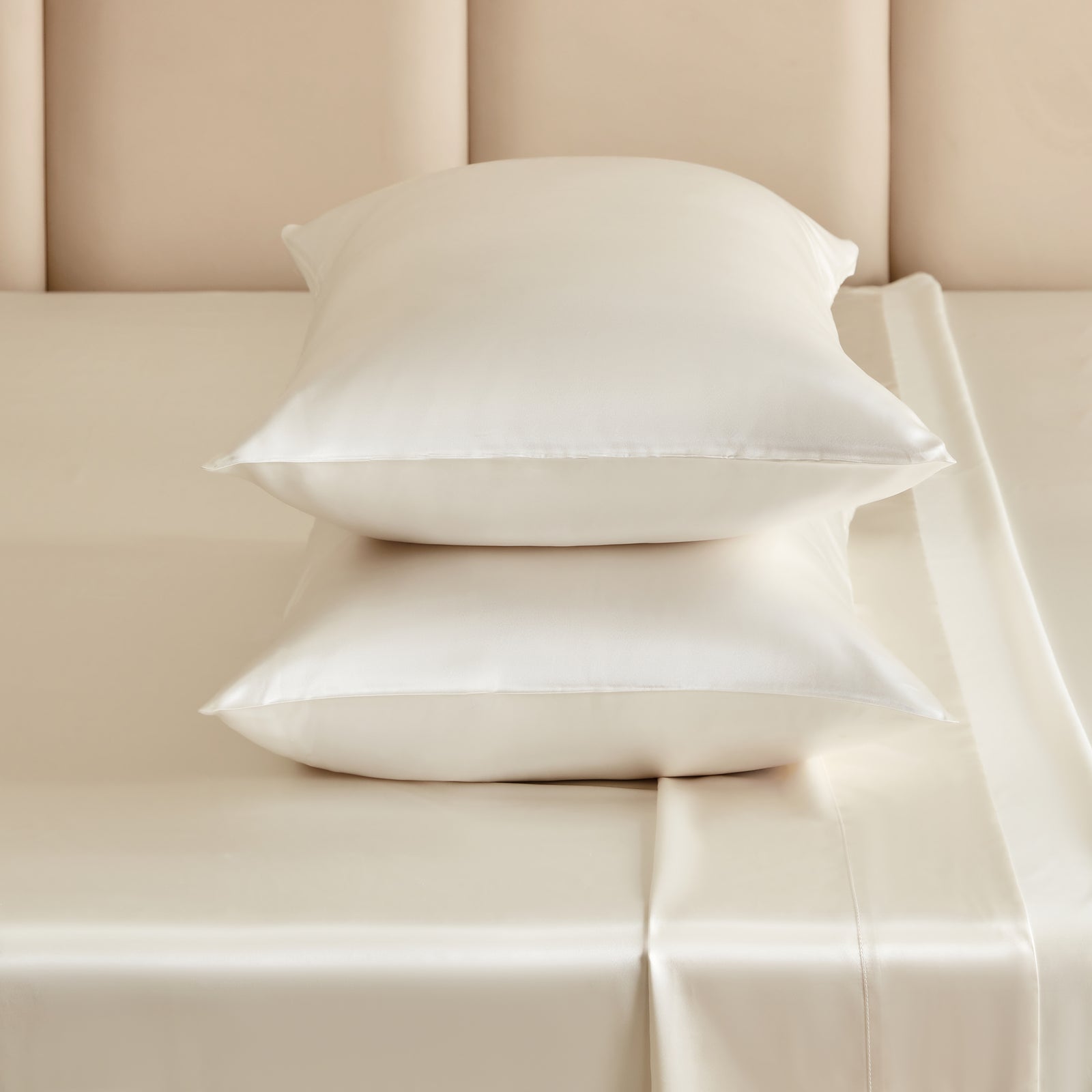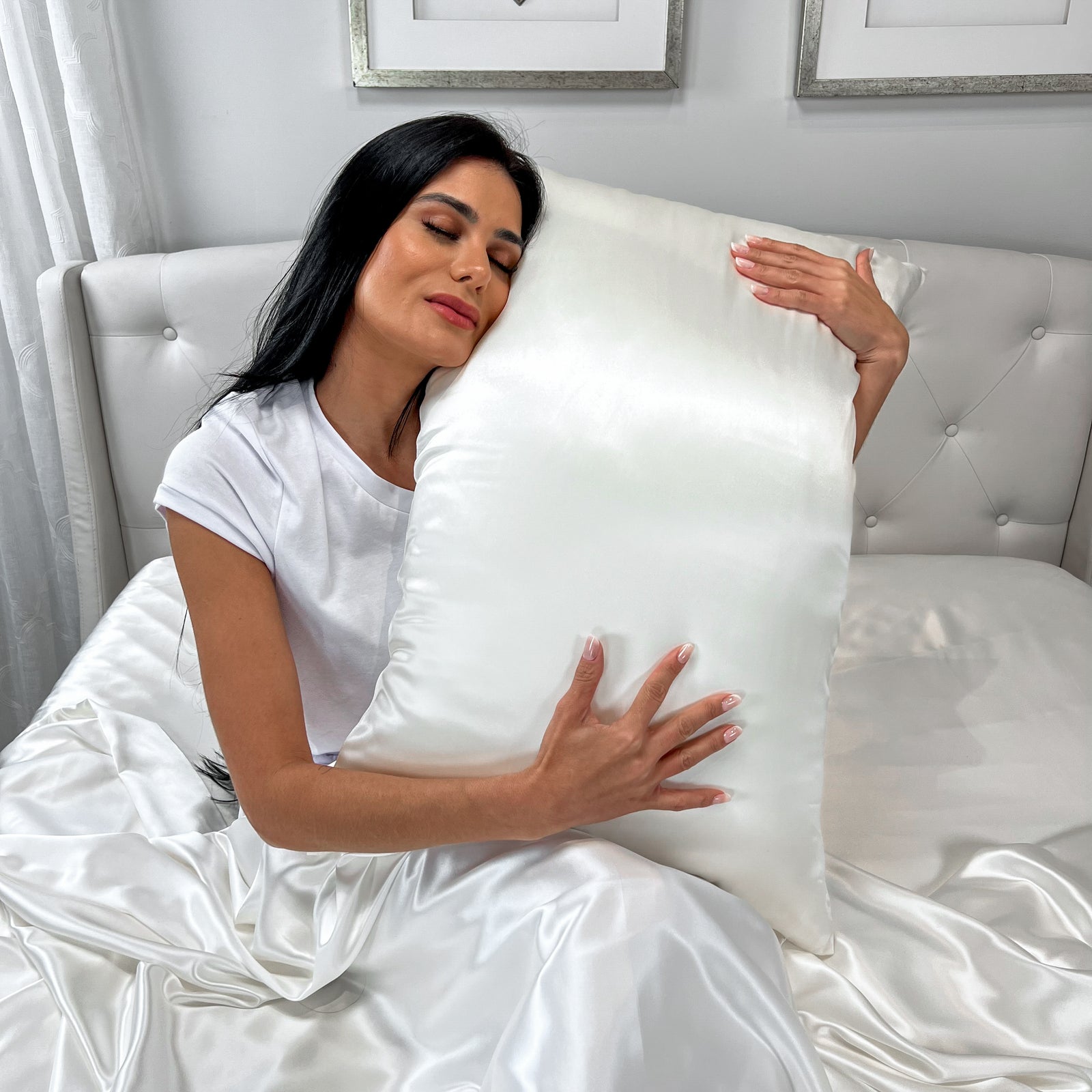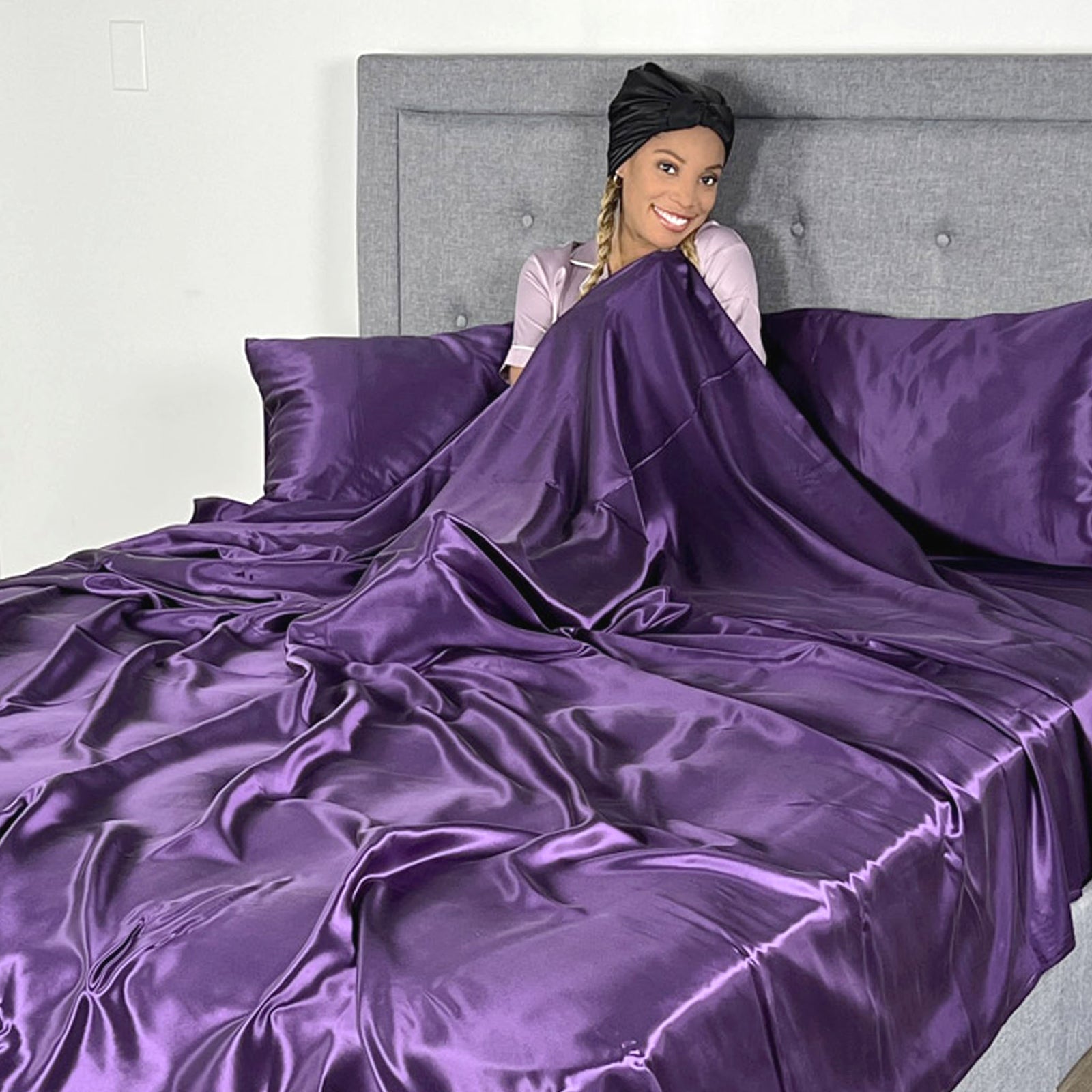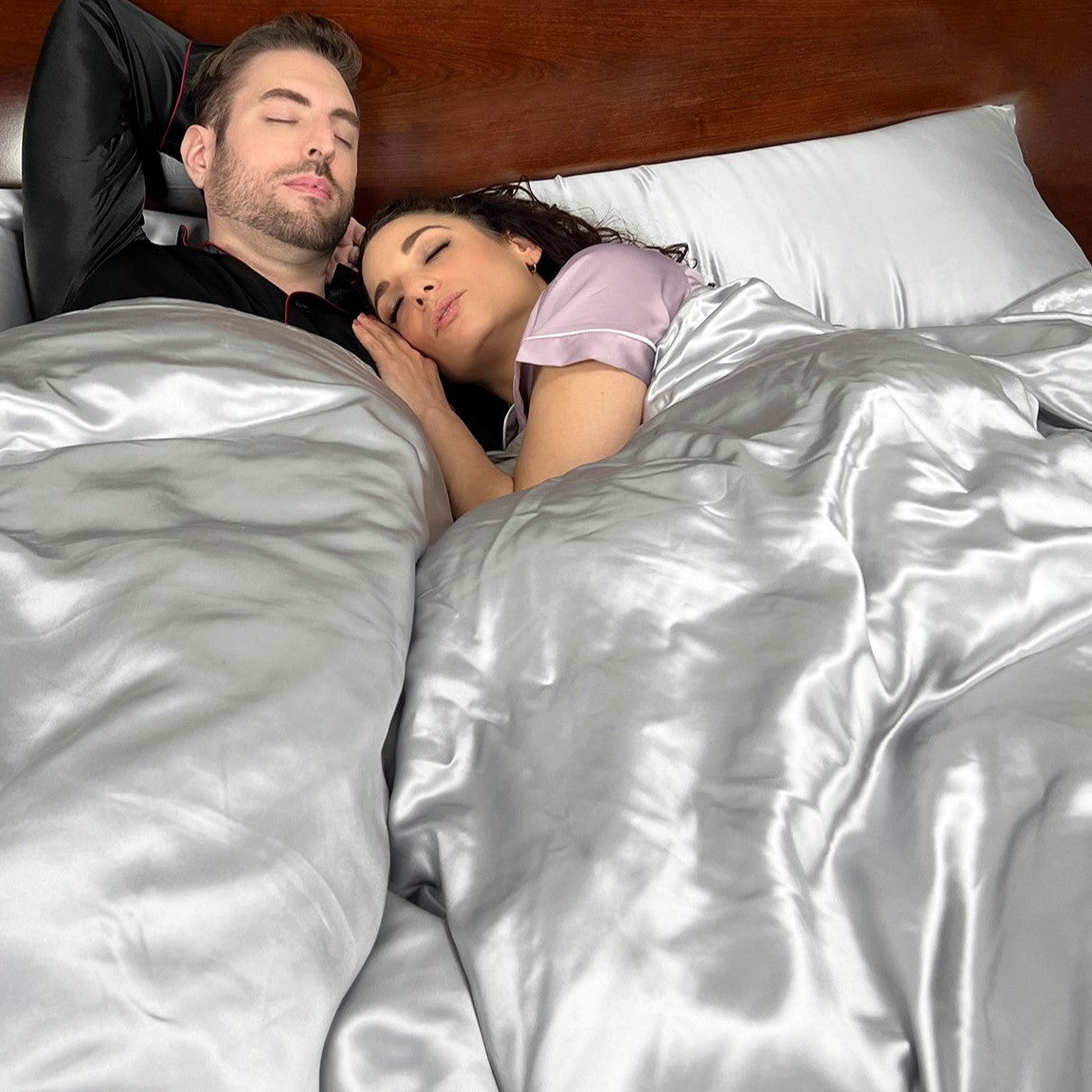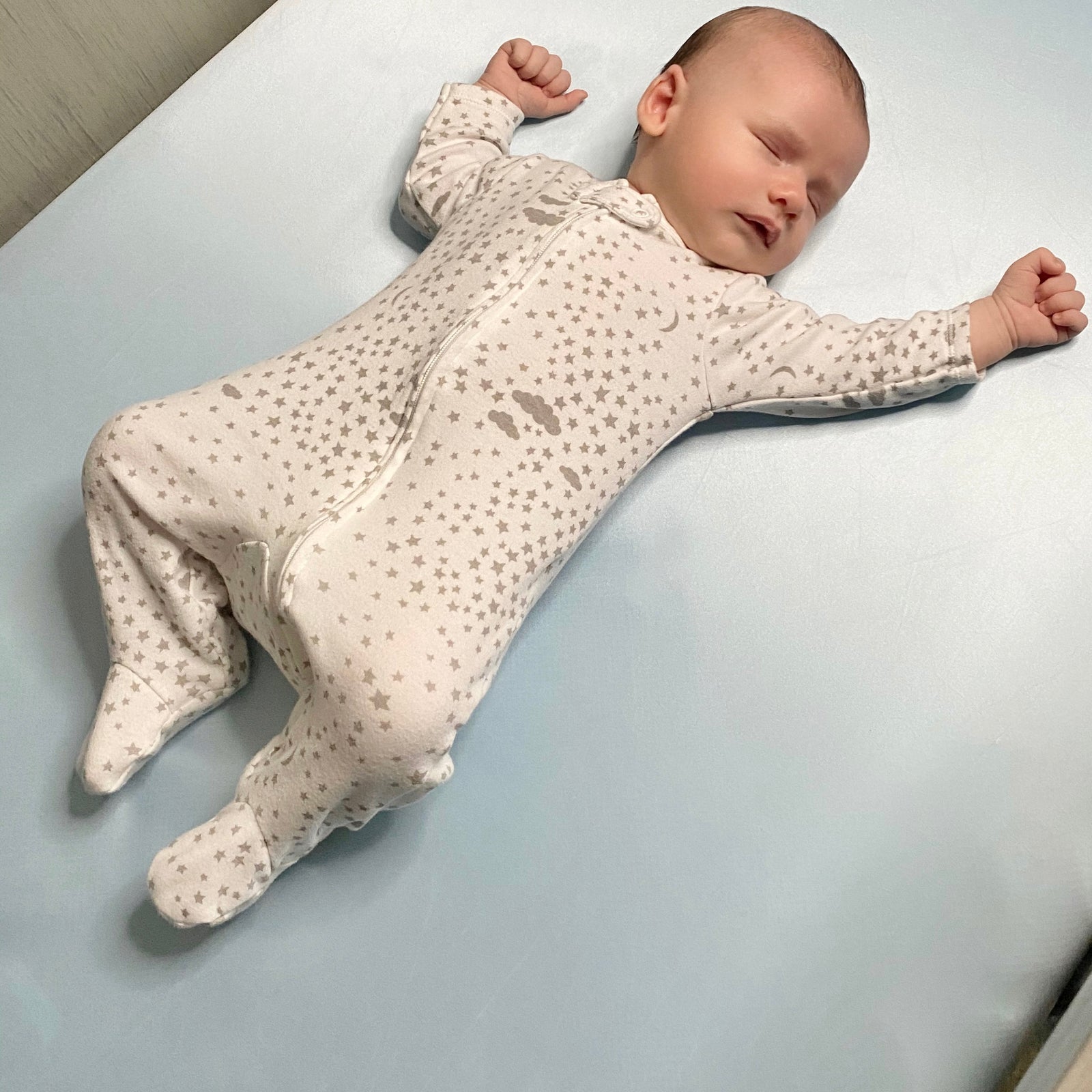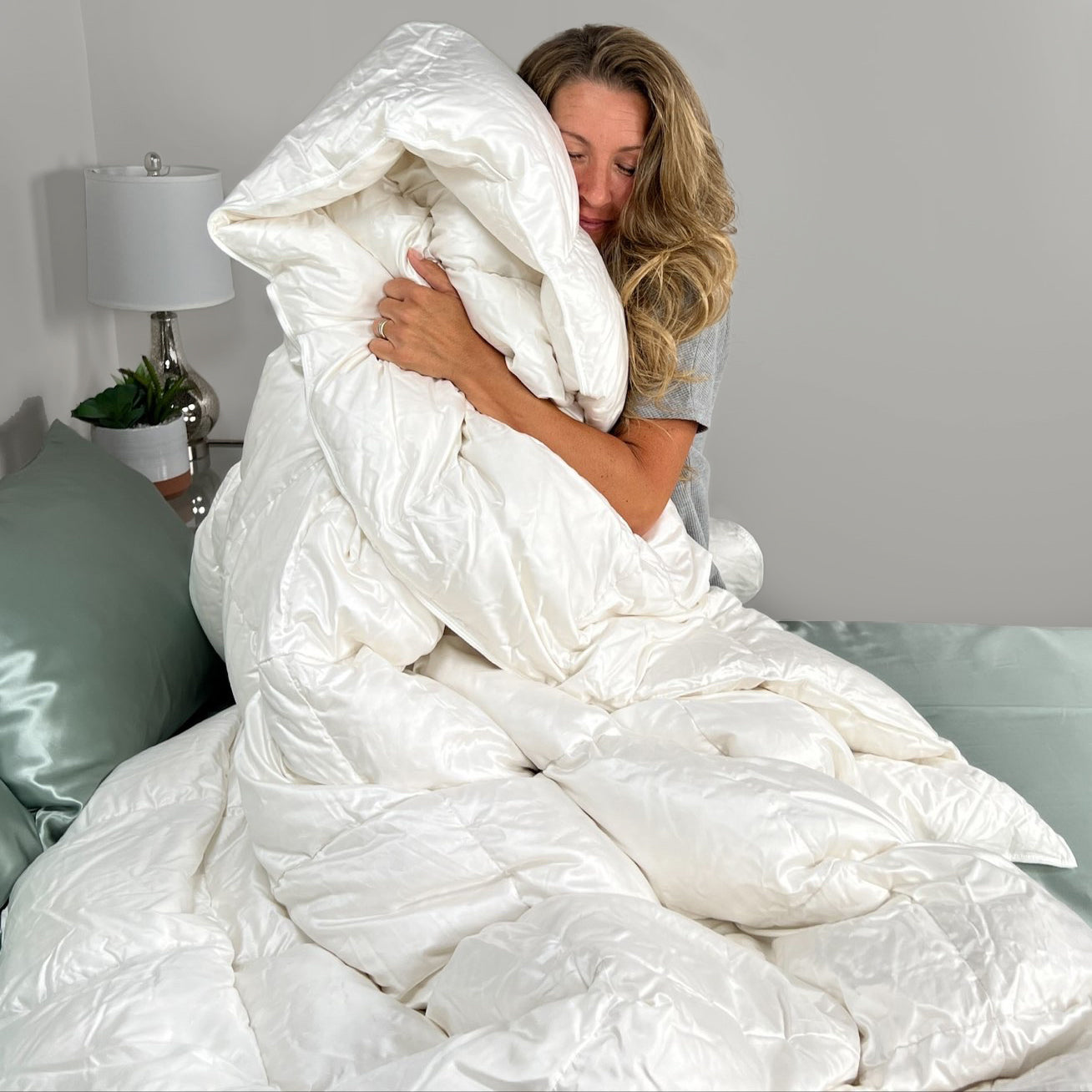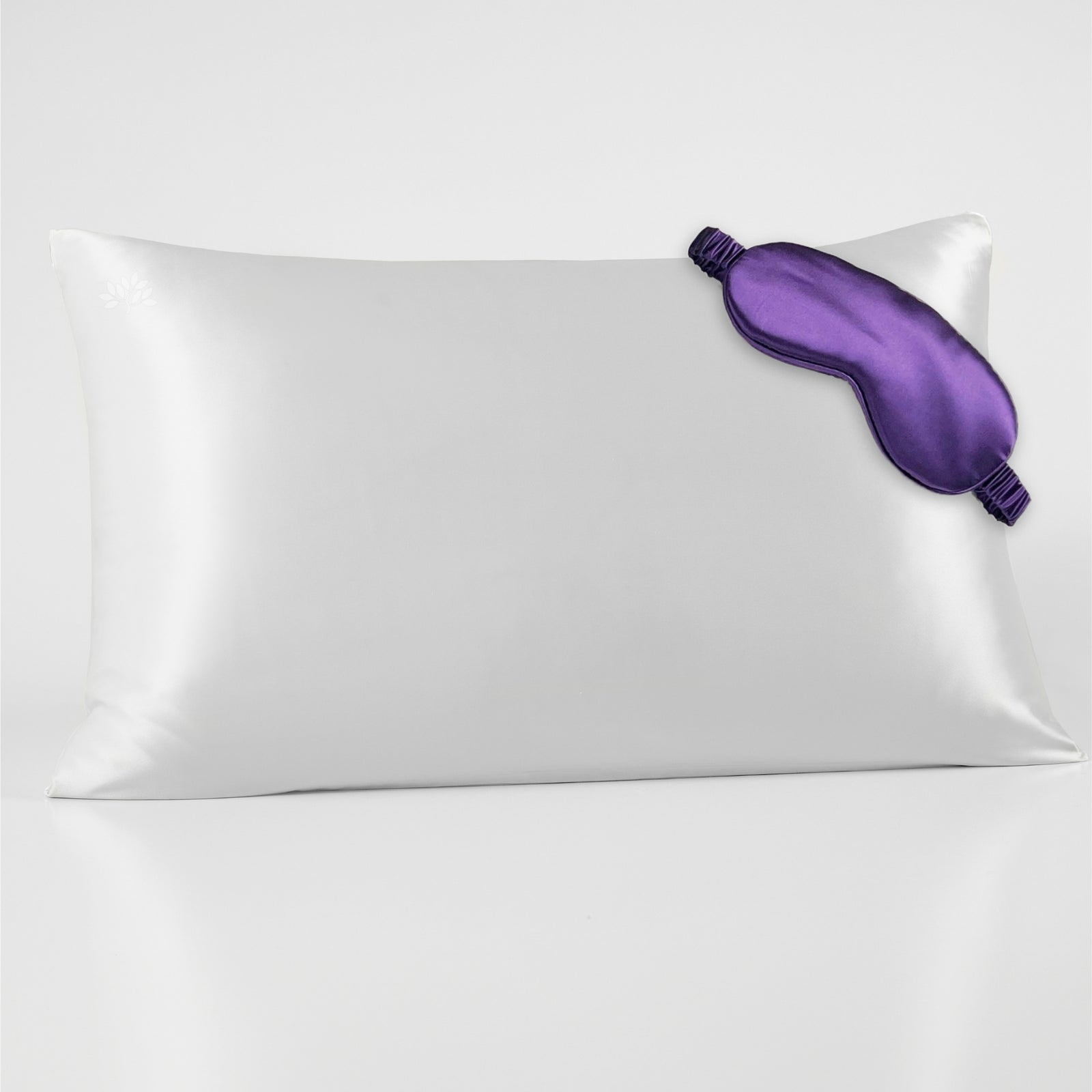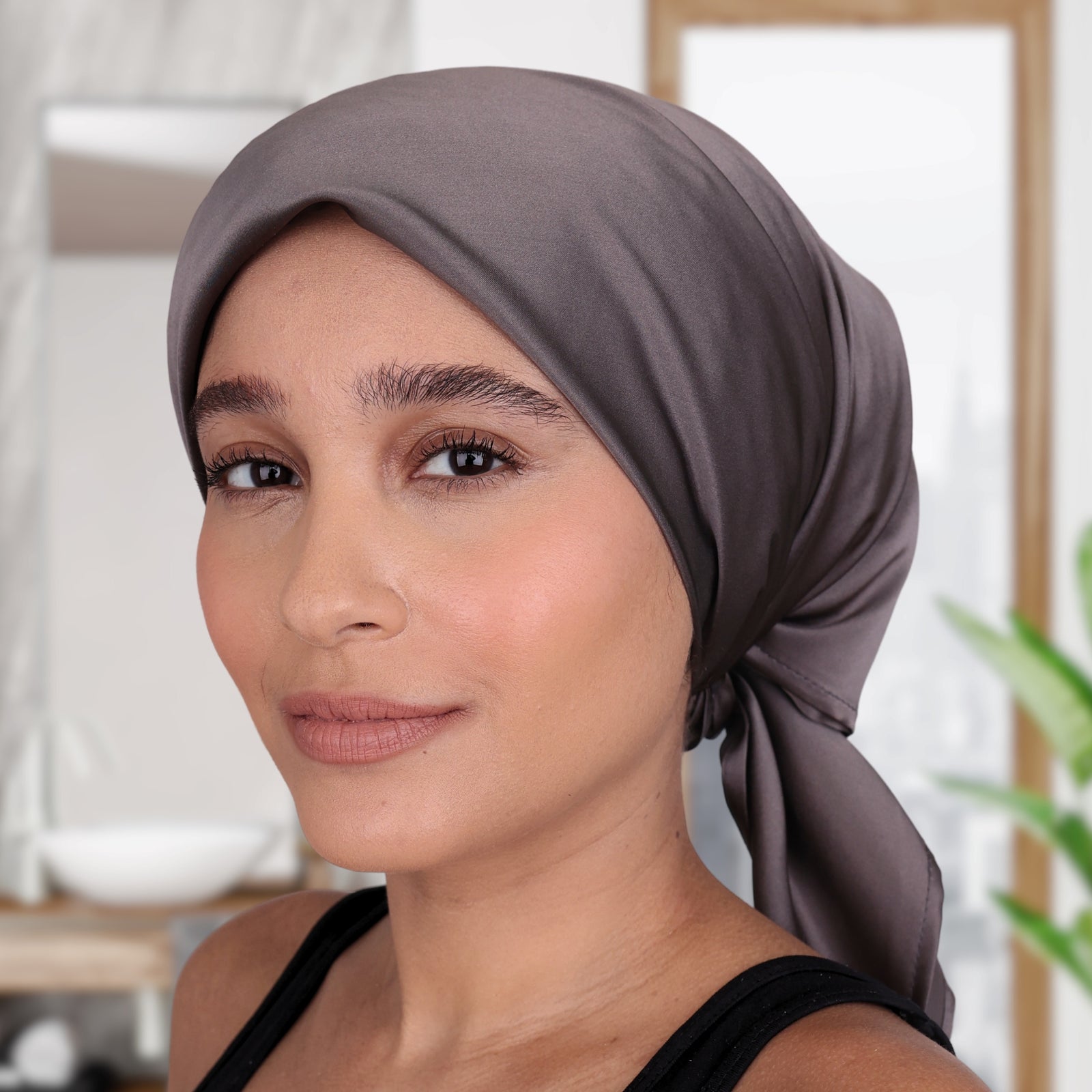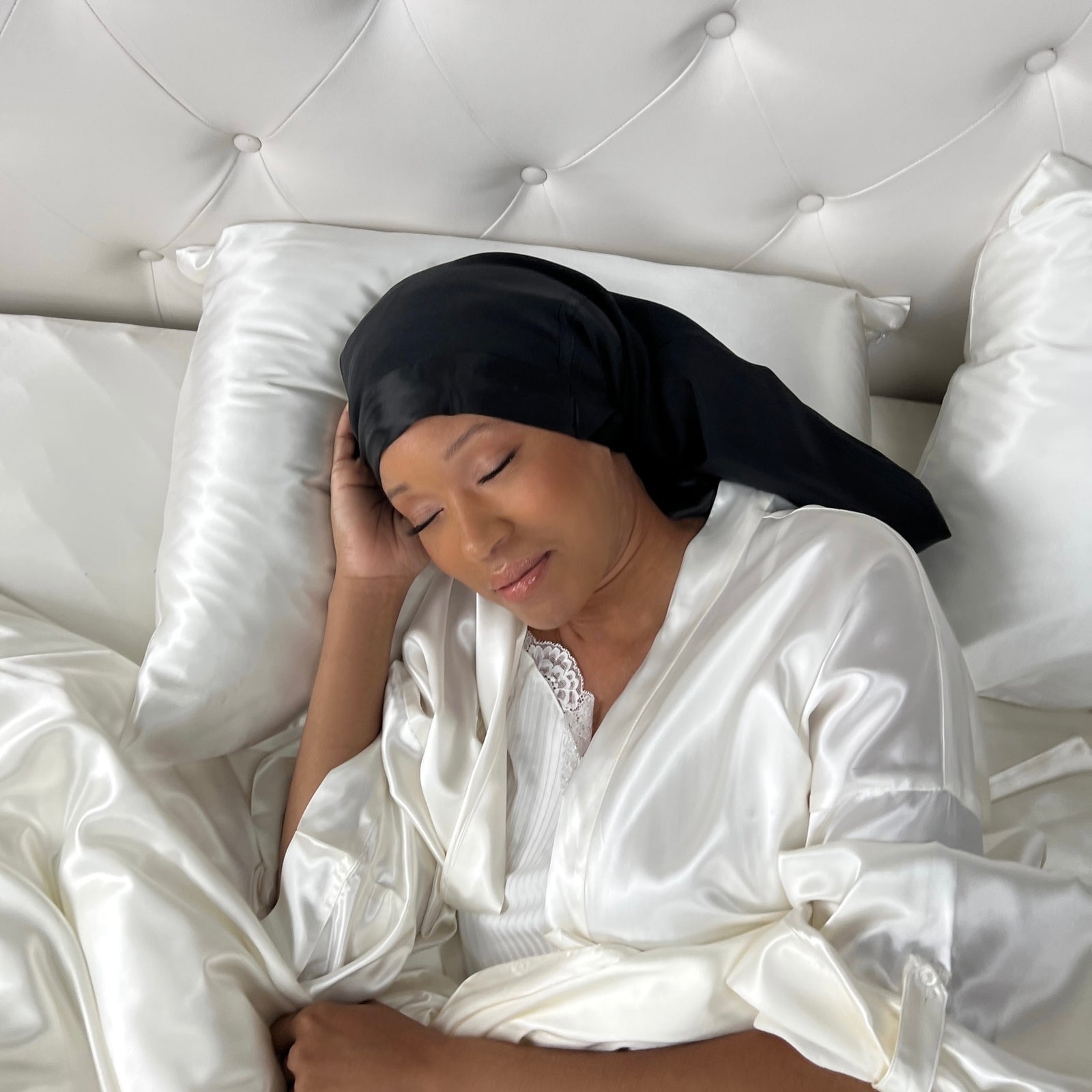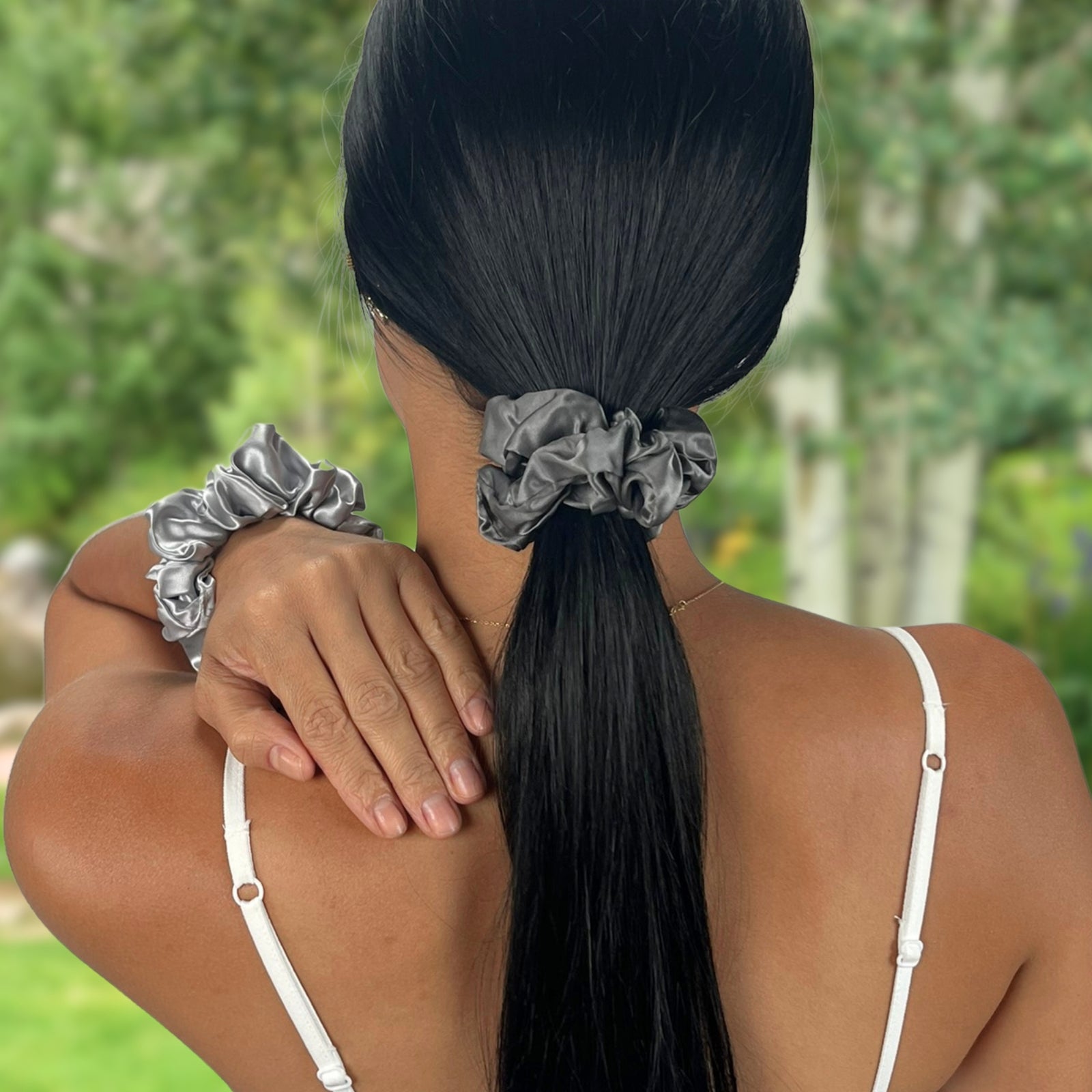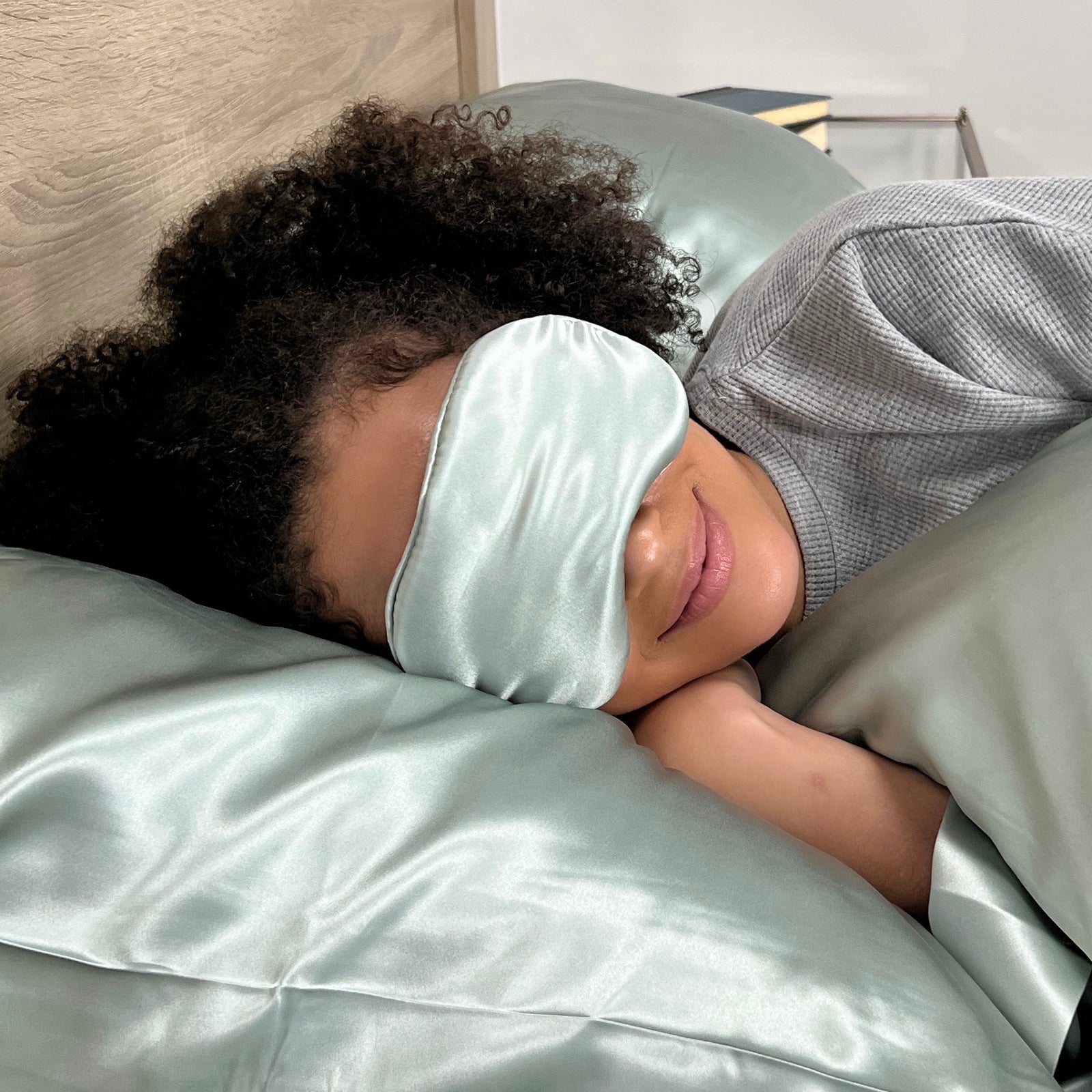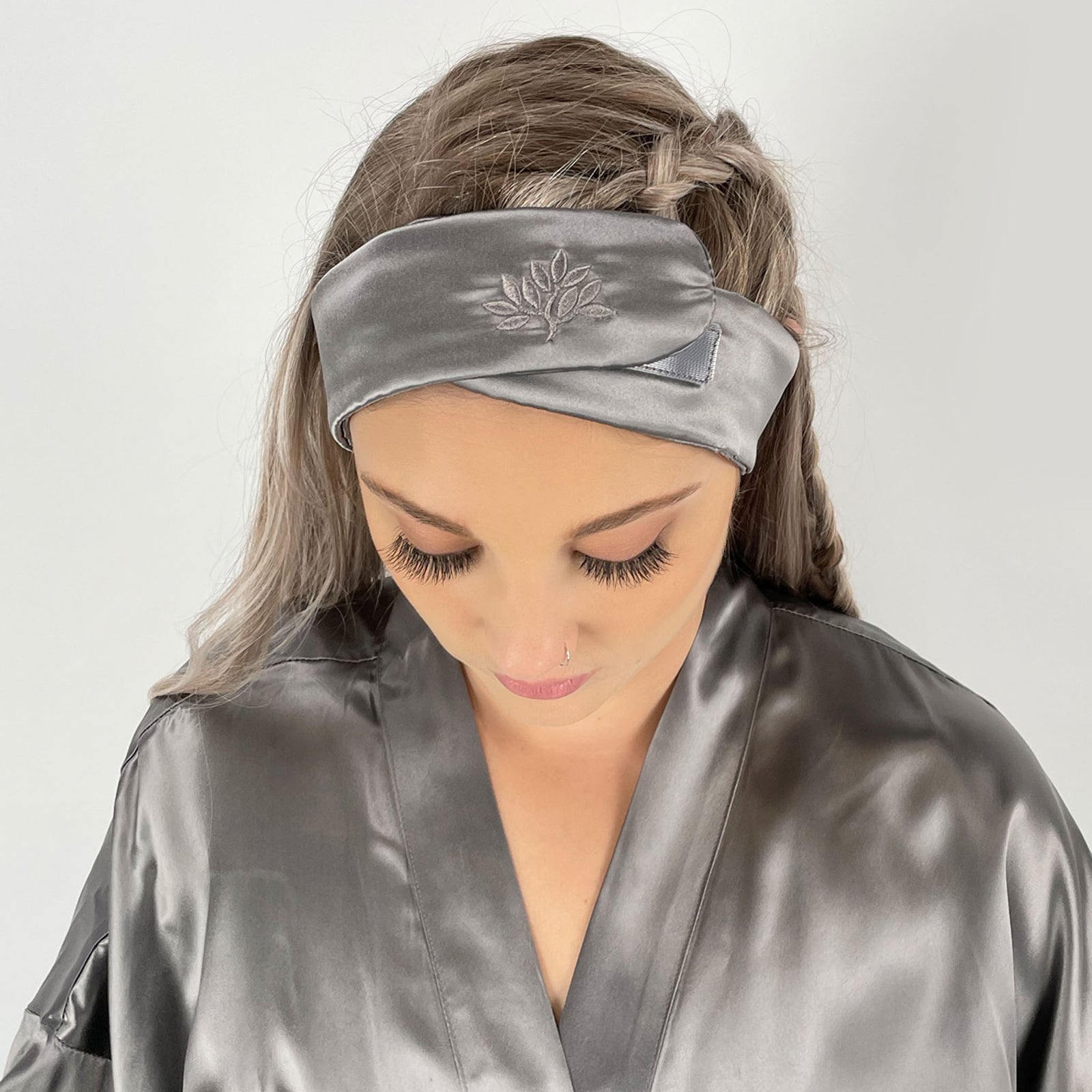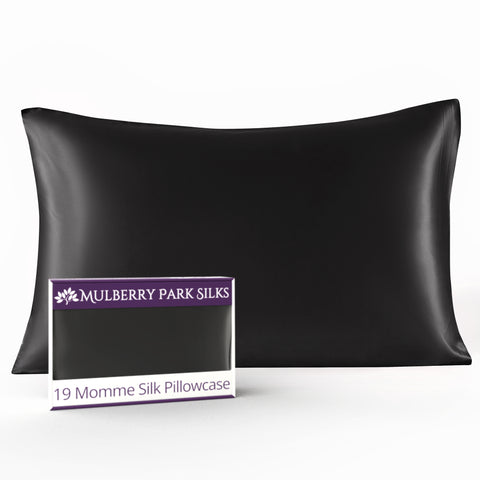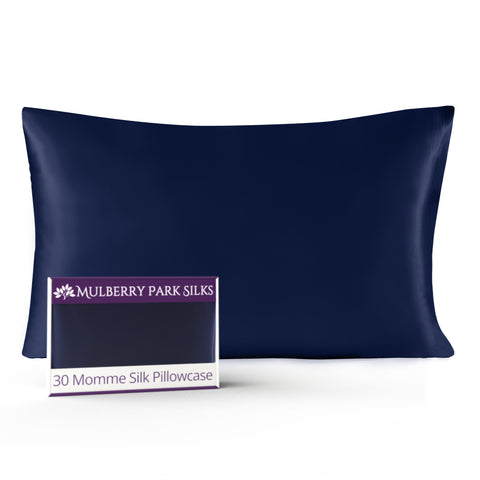August is National Hair Loss Month-the perfect time to see why a silk pillowcase should be part of every man's hair loss treatment plan, from the early stages of male pattern baldness to hair transplant recovery.
Key Takeaways
-
Most men overlook silk pillowcases in hair loss care — Yet silk provides a friction-free, protective environment for fragile or thinning hair.
-
Cotton can sabotage treatments — Its absorbent, rough fibers strip moisture and cause friction that undermines hair regrowth efforts.
-
Silk supports every stage of hair loss solutions — From male pattern baldness treatments to hair transplant recovery, silk’s protein-based, hypoallergenic fibers help protect and nurture hair.
Silk Pillowcases for Men: Hair Loss & Recovery Support
When most guys start dealing with hair loss, silk pillowcases are probably not the first thing that comes to mind. Medications like finasteride or minoxidil? Of course. Specialized shampoos and scalp treatments? You bet. Hair transplant procedures? Possibly. But a silk pillowcase? Not so much. But, if you're a man experiencing hair loss, a silk pillowcase can be a big help.
"We routinely get calls from men wanting to purchase silk pillowcases for their partners," explains Zoe Doyle, Associate Brand Manager at Mulberry Park Silks. "But when I start talking to them about the benefits of silk, they pivot to recognizing how silk can benefit them as well, especially if they're dealing with hair loss or thinning."
Whether you're experiencing male pattern baldness, recovering from temporary hair loss, or supporting new hair growth after a transplant, a Mulberry Park Silks pillowcase creates the ideal environment for protecting and nurturing whatever hair you have. It's a simple addition that can make a significant difference in your hair loss journey.
Understanding Male Pattern Baldness and Hair Loss
There are multiple reasons for and types of hair loss in men, with the predominant cause being genetic.
The Science Behind Male Pattern Hair Loss
Male pattern baldness, also known as androgenetic alopecia, is behind nearly 95% of male hair loss. This hereditary hair loss condition is caused by sensitivity to dihydrotestosterone (DHT), a male hormone that shrinks hair follicles over time. The classic pattern typically starts with a receding hairline and crown thinning, eventually progressing to the familiar horseshoe pattern of balding. Male pattern baldness is quite common; by age 35, nearly two-thirds of men are experiencing some degree of hair loss.
Other Types of Alopecia
Male pattern hair loss isn't the only culprit behind thinning hair. Alopecia areata causes patchy hair loss when the immune system attacks hair follicles. Traction alopecia results from tight hairstyles like braids or friction that damages the hair shaft and follicle. Some varieties of alopecia can cause scarring that permanently damages hair follicles.
Temporary hair loss conditions include telogen effluvium, where stress, illness, or medications (including chemotherapy) push hair into a resting phase with widespread hair loss or thinning.. The scalp and hair follicles are surprisingly delicate during any type of hair loss or regrowth process. Whether you're dealing with a bald spot, bald patch, or overall thinning, the remaining hair and newly growing terminal hair need gentle, supportive care to thrive.
Current Solutions for Hair Loss Treatment
The good news is that there are more hair loss treatment options available now than ever before.
FDA-Approved Medications and Treatments
FDA-approved medications like minoxidil help stimulate hair growth by improving blood flow to hair follicles, while finasteride blocks the production of DHT that causes pattern hair loss and pattern baldness.
Surgical and Advanced Treatment Options
Hair transplant surgery and hair transplantation procedures have become increasingly sophisticated, with techniques like FUE (Follicular Unit Extraction) allowing surgeons to move individual hair follicles from donor areas to create natural-looking hair density. These procedures can effectively address receding hairline issues and restore hair to areas affected by male baldness.
According to the American Hair Loss Association, newer treatments like platelet-rich plasma (PRP) therapy and noninvasive options like low-level laser therapy and scalp microneedling show promise for supporting hair regrowth. Some people also find success with nutritional approaches, addressing potential deficiencies that might contribute to alopecia or hair thinning.
The key to successful hair loss treatment often involves combining multiple approaches, as is the case with wrestler/actor John Cena, who recently underwent a hair transplant and now maintains the results with red light therapy. Whether you're working to prevent further hairline recession, support new hair growth, or maintain healthy hair during treatment, every element of your routine matters, including what you sleep on.
How Cotton Pillowcases Undermine Hair Loss Prevention and Recovery
Here's something most people don't know about hair loss: a cotton pillowcase can make the entire situation much worse.
Cotton is Highly Absorbent
Cotton is naturally absorbent, which means it literally pulls moisture away from your hair and scalp while you sleep. When you're trying to support hair regrowth or protect fragile, thinning hair, this moisture loss is the last thing you need.
Cotton Creates Friction Damage During Sleep
But the moisture-stealing problem is just the beginning. Cotton creates friction against your scalp and hair with every movement during the night. Those rough cotton fibers can cause tugging and breakage on hair that's already compromised (that same friction also contributes to wrinkle formation on your face). If you have male pattern baldness or alopecia areata, or are recovering from hair transplant surgery, this mechanical damage can be particularly problematic.
Think about it: you're investing time and money in hair growth treatments, specialized products, and maybe even surgical procedures. Then you're quite literally sleeping on a fabric that creates friction against the very hair you're trying to protect and grow. It's like taking one step forward and two steps back every single night.
This is where silk comes in according to Dr. Michael Rabin, MD & Founder of the LaserCap Company, "Silk’s ability to maintain moisture can also help keep the scalp hydrated, which is essential for hair follicles to thrive. By minimizing tension and friction while sleeping, silk pillow cases can help protect fragile hair strands and contribute to overall hair health."
Why Silk Pillowcases for Men Are Essential in Hair Loss Care

View Silk Pillowcases View on Amazon
A silk pillowcase is an essential tool for anyone wanting to minimize or recover from hair loss. No matter what approach you're taking-- managing male pattern baldness with medications, recovering from hair transplantation, or supporting hair regrowth after temporary loss-silk provides the ideal supportive environment.
"When paired with other hair regrowth treatments, such as topical minoxidil, supplements, or low-level light therapy devices, silk pillowcases may enhance their effectiveness by creating an environment for healthier hair growth. The gentle, friction-free surface helps protect delicate, new regrowth, likely reducing the risk of further damage." says Dr. Rabin
Regardless of where you are on your hair growth journey, a silk pillowcase is an absolute game-changer for anyone dealing with hair loss.
Want a Silk Pillowcase?
Not Sure which One Is Best?
Want a Silk Pillowcase?
Not Sure which One Is Best?
The Science of Silk for Hair Health
Silk pillowcases are made from protein-based natural fibers that share similarities with your hair's structure. Unlike cotton, silk creates a low-friction surface that allows your hair to glide smoothly as you move during sleep. This is especially crucial for fragile new hair growth or hair that's been weakened by androgenetic alopecia. "Silk pillow cases can definitely help mitigate potential hair thinning due to friction." says Dr. Michael Rabin, MD, "preventing hair from snagging or breaking during sleep, which can contribute to slower hair loss and minimize breakage.
Silk also minimizes frizzy hair, tangles, and bedhead.
More Benefits for Scalp Health and Hair Protection
The smooth surface of quality silk dramatically reduces the mechanical stress on individual hair follicles. Whether you're protecting existing hair density or nurturing new terminal hair after treatment, silk provides the gentle environment your scalp needs. The protein-based structure of silk fiber actually helps hair retain moisture rather than stripping it away like cotton.
Silk is naturally hypoallergenic, breathable, and temperature-regulating for year-round comfort. Silk also resists bacteria, mold, and dust mites, which is particularly beneficial for men dealing with scalp sensitivity or skin problems like acne. The clean, bacteria-resistant surface helps maintain optimal scalp health - a crucial factor for anyone trying to maximize hair growth or prevent further hair loss. One more thing to keep in mind: silk and satin are not the same. It might be tempting to grab a satin pillowcase to save a few bucks, but that could be a costly mistake in the long run. While satin may feel smooth, it's typically made from petroleum-based polyester and lacks the natural benefits of genuine silk. Unlike silk, satin offers no hydration or hypoallergenic properties, and its synthetic fibers aren't breathable-often trapping heat and making you sweat more during the night.
Mulberry Park Silks: Your Source for the Best Silk Pillowcase

At Mulberry Park Silks, we understand that men approach hair loss with the same attention to quality and results that they bring to other health decisions. That's why we're proud to share what makes our silk pillowcases the superior choice in a crowded marketplace.
Superior Quality and Construction. We use only Grade 6A mulberry silk-the highest quality available-in all our silk pillowcases, bedding, and accessories. Our pillowcases come in a choice of generous envelope or high-quality hidden zipper closures. We also sew our pillowcases with a French seam for durability.
A Range of Weights, Sizes, and Colors: Our silk pillowcases come in multiple weights: a lighter weight of 19 momme, our most popular and versatile 22 momme, and a heavy and luxurious 30 momme. They are available in standard, queen, and king sizes to fit any bed. We offer an extensive color selection, from classic ivory and white to sophisticated designer shades that complement any bedroom décor.
Safety Certification. All our products are OEKO-TEX Standard 100 certified, meaning they've been independently tested and guaranteed to be safe from harmful chemicals. This is important for anyone dealing with scalp sensitivity or using topical hair loss treatments.
Easy Care. Mulberry Park Silks pillowcases can be machine-washed using cold water or lukewarm water on a gentle cycle or hand-washed. We suggest using a gentle detergent made for silk, like Heritage Park Silk and Wool.
Proudly Based in the United States. We are a US-based company headquartered in Branford, Connecticut. This allows us to deliver the personalized customer service and product reliability that our clients value. When you have questions about care, sizing, or which pillowcase works best with your specific hair loss situation, you can actually speak with our silk experts who understand both the products and the challenges you're facing
Transform Your Hair Loss (and Regrowth!) Journey
Whether you're dealing with the early stages of male pattern hair loss or weeks into recovery from hair transplant surgery or other complicated treatments, adding a silk pillowcase to your routine is a simple and effective step. The time you spend sleeping should be time your hair spends recovering and growing, not fighting friction and losing moisture. Make the switch to Mulberry Park Silks and give your hair loss treatment plan the support it deserves.
If you'd like to learn more about how our silk pillowcases can support your efforts to minimize hair loss and regrow hair, feel free to contact our team of silk experts. We can help you find the
Frequently Asked Questions
Can silk pillowcases really help with male pattern baldness?
While a men's silk pillowcase won't cure androgenetic alopecia, it creates an optimal environment for protecting existing hair and supporting any hair regrowth treatments you're using by eliminating friction and retaining moisture.
How do silk pillowcases compare to satin for men with hair loss?
Real silk pillowcases are far superior to satin made from polyester. Silk's protein-based structure naturally supports hair health, while synthetic satin lacks these beneficial properties for hair and skin.
Are silk pillowcases good for men recovering from hair transplants?
Absolutely. The friction-free surface of luxury silk pillowcases is ideal for protecting newly transplanted hair follicles during the critical healing period after hair transplant surgery.
Will a silk pillowcase help with alopecia areata or patchy hair loss?
Yes, silk's gentle surface helps protect fragile regrowth in areas affected by alopecia areata, making it the best silk pillowcase for hair loss. A mulberry silk pillowcase for men can reduce scalp irritation that might interfere with hair regrowth.
How do I wash a silk pillowcase properly?
Our silk pillowcases can be machine-washed on a gentle cycle with cold water and silk-safe detergent. Use a mesh laundry bag for protection and never put silk in the dryer - hang to dry instead.
When I travel, can I take my silk pillowcase with me?
If you often find yourself in hotel rooms, whether for business or pleasure, do not forget to bring your silk pillowcase with you (yes, it's hypoallergenic and more sanitary) but it will also reduce the friction that could derail your hair growth efforts. We even sell a silk travel pillowcase perfect for inflight naps.
Do dermatologists recommend silk pillowcases for hair loss?
Many dermatologists recognize the myriad silk pillowcase benefits for men and recommend them to patients dealing with hair thinning or scalp sensitivity. Because of its hypoallergenic, friction-reducing properties, ours is naturally the go-to men's silk pillowcase.
How does Mulberry Park Silks compare to expensive options like Slip or Blissy for men?
Mulberry Park Silks offers Grade 6A quality silk at a better value than a Slip Pure silk Pillowcase or Blissy Silk Pillowcase. We also provide superior customer service with headquarters, warehouse, and customer support operations all based in the United States.
Can silk pillowcases help with frizz and tangles for men with thinning hair?
Absolutely! The smooth surface of silk prevents frizzy hair and tangles that can make thinning hair look even more sparse. This is especially beneficial for men dealing with hair regrowth, where new hair can be particularly prone to frizz.
Are there skin benefits beyond hair for men using silk pillowcases?
Yes! Silk's smooth surface helps prevent sleep wrinkles and is gentle on facial skin. The hypoallergenic properties benefit your entire body, making silk ideal for men with sensitive skin or those using topical hair loss treatments. And if you're sporting facial hair, silk can help keep your beard healthy and strong.
What's the best way to care for silk pillowcases - hand washing or machine washing?
While hand washing is gentlest, our silk pillowcases are designed for convenient washing machine care. Use cold water on a gentle cycle with a mesh bag for protection, and your silk will maintain its hair-protecting properties.


